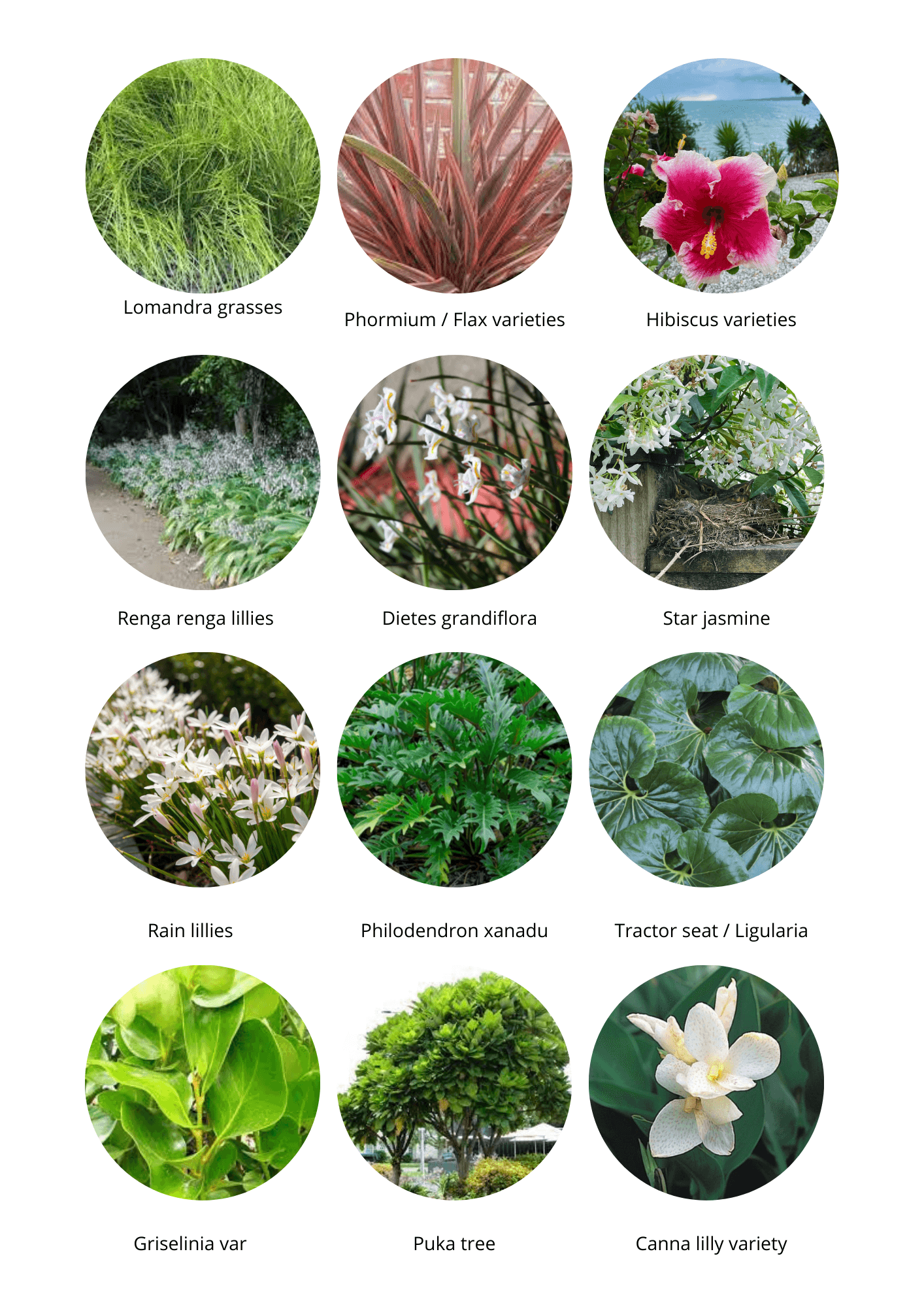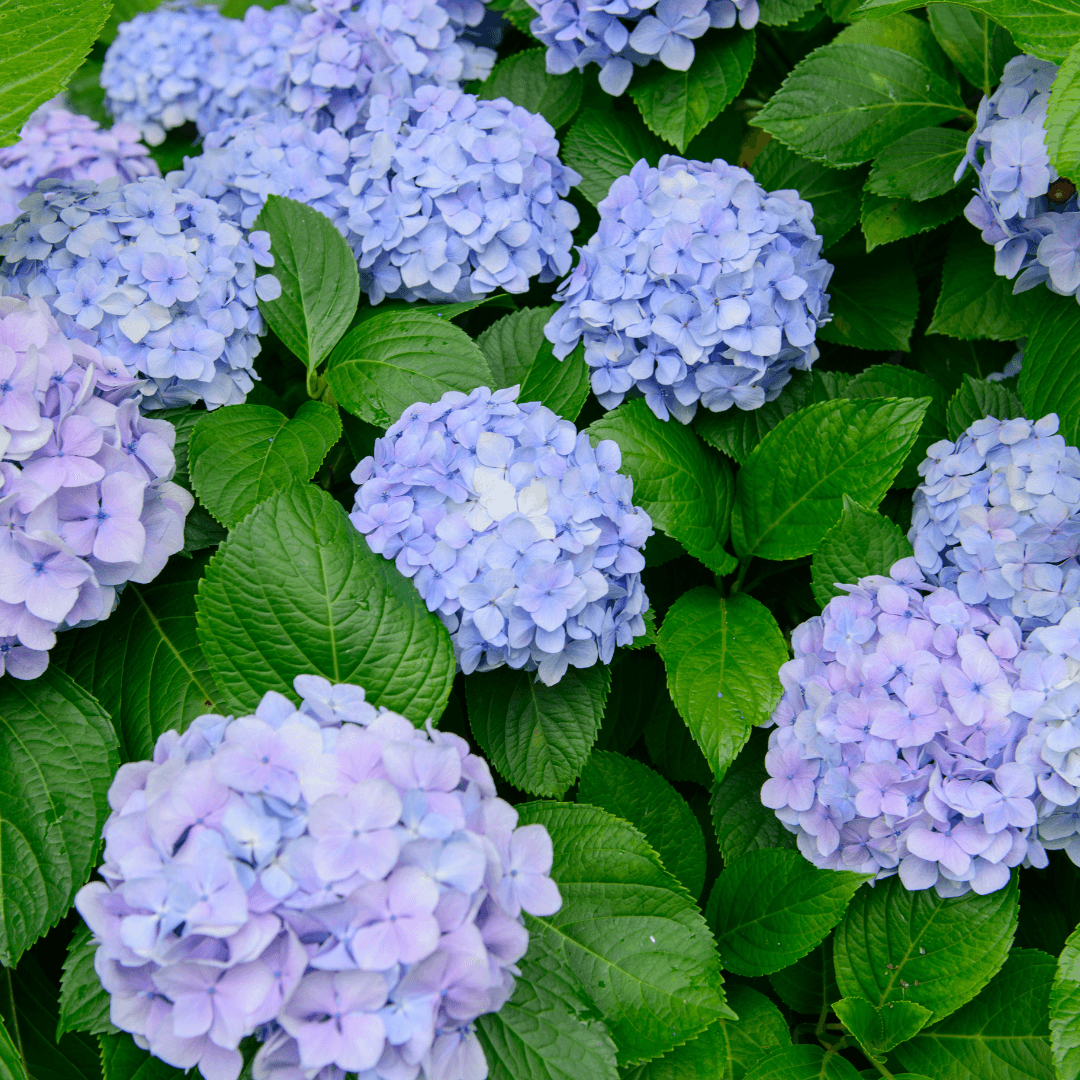Plant knowledge & identification
Frequently used plants in our gardens


Camellia
A very hardy, evergreen tree that is super popular for its lovely winter flowering, especially when everything can be a little dull.
There are two main varieties of Camellias. The Camellia Sasanqua which is more commonly used for hedging as it has a smaller pointy leaf. The other is Japonica and has a fatter leaf.
Pruning
After flowering in later winter, Camellia can be pruned to improve the shape or trimmed if they are a formal hedge or standard. It's important not to be tempted to cut them back in summer as you will lose the flower buds for a nice show in winter.
Fertilising & feeding
Camellia prefer an acid soil to grow in, so use an acid fertiliser for feeding.
The best time to feed Camellias is straight after the flowering has finished.
Compost also increases soil acidity, and animal manures do as well - but over a longer period of time as they need to break down and decompose.

Clivia
A fairly common shade loving plant originating from South Africa, with long dark green strappy leaves. A lovely show of flowers comes in spring - on the Miniata variety which is a pretty soft orange. There are varieties with wider leaves (I think these have more appeal) with deeper rich colours of orange to almost red and a soft yellow.
For success they need thick mulch around their base and a regular feed in the growing season. They are perfect under a tree or in light to deep shade. They never perform well in hot evening sun - you will notice the tips go yellow and crinkly brown.
Eggs of slugs and snails are laid in Autumn, so placing bait down in Autumn is key if you want to stop eggs hatching in spring. They make a mess of the flowers and will chew holes in all of the much awaited blooms. Explain to customers that you have thought forward and placed bait down to ensure the blooms are unaffected!
Dead heading
It comes down to personal preference regarding deadheading the bold red flowerhead seed. I usually remove them so they don’t break up the lovely dark green mass of foliage that sits in the garden.


Citrus trees
Feeding & fertiising
Citrus are big feeders and require a feed during their growing season - September to March
Citrus in the ground are best fed with a specialist citrus fertiliser every six weeks from September to March
Citrus require higher levels of potassium and magnesium, and citrus food is specially blended with all the nutrients needed for citrus planted in gardens.
Magnesium deficiencies can be common in citrus, shown by yellowing leaves
Watering in Summer
Citrus require more watering over the summer months - and well watered, well nourished citrus will have a better chance of keeping insect pests and diseases at bay.
Mulch and water well, particularly over the warmer months.
Pruning
The best time to prune your citrus is after fruiting in Spring
Prune if you need to for either a desired shape, to remove any diseased stems, or to improve air circulation. Remember leaves are the life of the tree, so don’t cut unnecessarily, particularly before the tree has matured.
If you are pruning, avoid September/October if possible as there is risk of lemon tree borer laying eggs in fresh cuts
Sooty mould
Citrus sooty mould isn’t actually a plant disease but a black, powdery fungus that grows on branches, leaves, and fruit. The fungus is unsightly but it generally does little harm and the fruit is edible. However, a severe coating of fungus can block light, thus affecting plant growth. Most importantly, citrus with sooty mould is a sure sign that your citrus tree has been invaded by harmful insects.
Citrus with sooty mold is the result of an infestation of aphids or other types of sap-sucking insects. As the pests dine on the sweet juices, they excrete sticky “honeydew” that attracts the growth of ugly black mold.
If you want to get rid of sooty mold on citrus, the first step is to eliminate the honeydew producing insects. While aphids are often guilty, honeydew is also left behind by scale, whiteflies, mealybugs, and various other pests. Neem oil, or insecticidal sprays are effective ways of controlling pests, although eradication generally requires more than one application.

Ligularia reniformis / tractor seat
Common semi shade/shade evergreen plant with big showy leaves
- Cut old and tatty leaves off at the base of the plant.
- Ensure there is a good amount of compost at the base of each plant, needed for strong growth & creating all the big leaves.
Slug pellets
Place slug pellets down each visit to prevent slugs and snails from eating the leaves.
Dead heading
Removing the yellow daisy flower at the base ensures the plant's energy focuses on the leaves.


Lavender
Lavenders are best trimmed and pruned after flowering has finished, with a main annual cut back in summer so that new growth has time to harden off before winter.
Remove the spent lower spikes and trim to shape. Prune back by a third to a half as soon as they finish flowering to encourage new growth.
The plant cannot produce new growth from the woody parts. When you're pruning woody lavender plants, it's also a good idea not to prune all of the plant at the same time. Instead, work slowly, trimming back each branch, but never cutting into the brown wood. You can trim branches back by one-third or one-half.


Canna
Tropical summer flowering plant which comes in many colours of flower and leaf.
Circular holes in leafs is a sign of wasps or leaf rollers - spray with insecticide.
Snails and Slugs - Large ragged holes, chew marks on leaf edges and silvery trails on leaves or ground.
Dead heading
Follow these tips when pruning your canna lily:- Deadhead any flowering spikes quickly to encourage further flowering and regrowth.
- Cut off the flowers at the next side shoot down, which will in turn produce another flower spike. Each stem should produce between two and four spikes.
- Damaged growth or old stems can be cut back to just above ground level. In autumn or after the first frost, cut the stems back down to the ground and mulch to protect them.
- In tropical or warm temperate climates, canna lily will continue to grow and can be cut back hard in autumn or spring to rejuvenate and control the clump.

Hydrangeas
- Like semi shade / morning sun spots.
- Ensure plant has good layer of compost beneath the plant and mulch
- Feed hydrangeas in spring and late summer or early autumn to promote flowering and lush green leaves.
Pruning
You can prune your hydrangeas in autumn or early spring/late winter. Around August/September the fat flower buds will start developing so it is easier to know where to prune to get maximum flowering. Vegetative buds (leaves) will be long and skinny. Our advice would be to deadhead in autumn and then in August/September prune back to a fat bud after the threat of frosts have passed, to maximise flowering.








